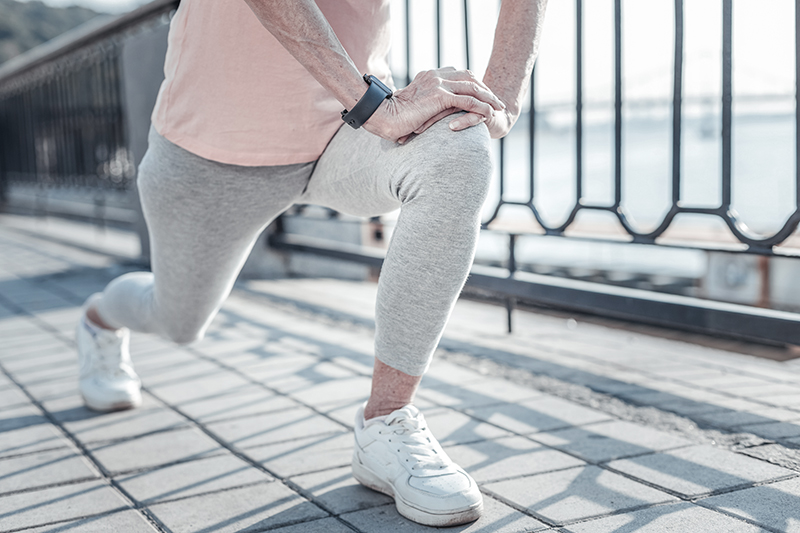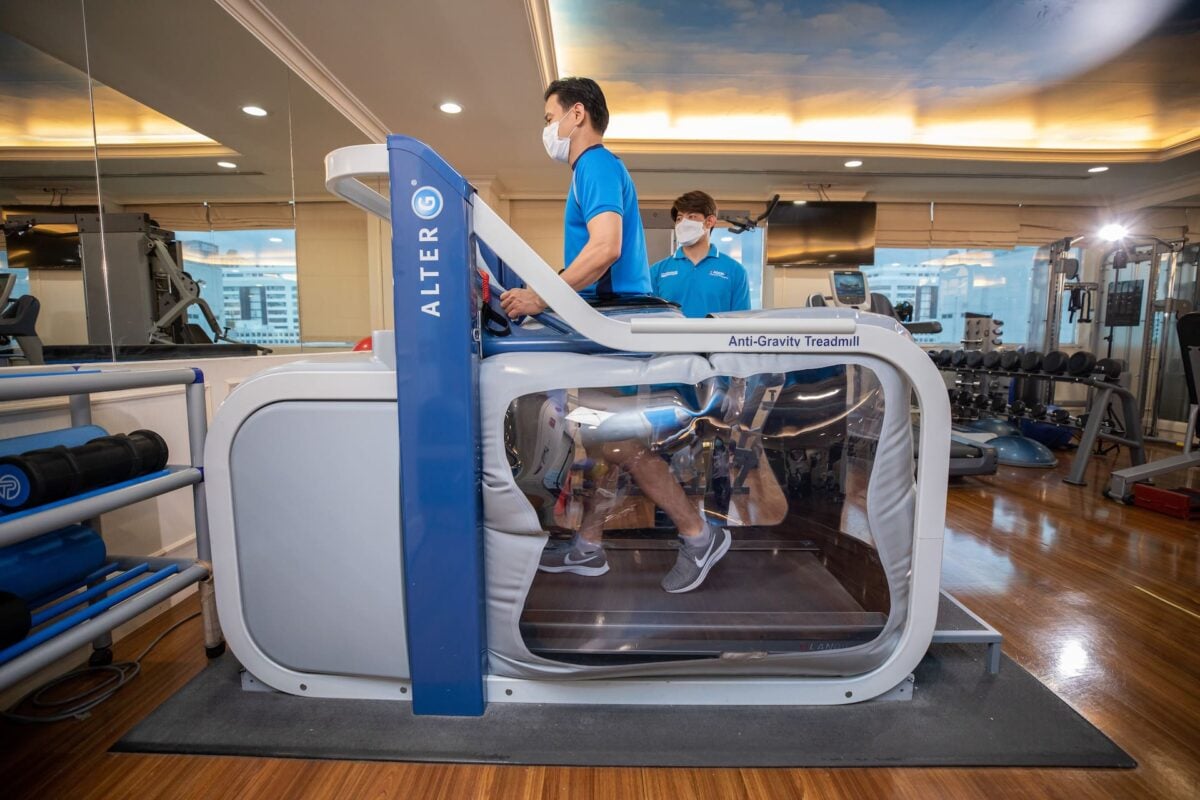1. What are the symptoms of knee osteoarthritis?
People who are suffering from knee osteoarthritis and knee pain may experience some or all of the following symptoms. For example:
- Knee pain
- Sore knee
- Stiff or restricted knee movements
- Unusual noises inside the knees
- Swollen knees
- Weakness in the legs or knees
The most common condition is knee pain that occurs when walking up – down an incline or stairs, or sitting on the floor – for example, kneeling, sitting with legs folded or crossed. The pain can arise while walking on flat ground as well.
2. What factors cause knee osteoarthritis?
The causes or factors that lead to knee osteoarthritis consist of many elements altogether. There is no single cause alone. The factors include:
- Advanced age
- Being overweight – e.g., obesity
- Activities that overload the knees and cause the pain
- Had a prior severe accident around the knee – e.g., broken bone inside the joint, torn ligament or meniscus
- Has a history of infection in the knee
- Suffering from chronic joints inflammation – e.g., rheumatoid arthritis or gout
- Gender – Studies have shown that women are more prone to knee osteoarthritis than men
- Genetic – It has been found that people whose parents or relatives suffer from knee osteoarthritis have a higher risk of this condition, and it usually affects joints all over the body – e.g., hands, fingers, spine, and knees, etc.
3. Can young people have knee osteoarthritis?
It is possible for people younger than 50 years old to have this condition and experience pain in the knees. Generally, this is a result of a previous severe injury around the knee that has caused the supporting structure to be misaligned or damage to the knee bone cartilages, leading to pain in the knee. It can also be due to a chronic inflammation (e.g., rheumatoid arthritis) that ravages bone cartilages since an early age. Similarly, osteonecrosis, too, can be a factor.

4. What should I do when I experience pain walking, standing up or sitting down?
It is common for people with knee osteoarthritis to usually feel pain in the knees when they walk, sit on the floor or stand up. If the symptoms are not very severe, adjustments to the postures and habits will help alleviate the pain. For example, they should sit on a chair instead of on the floor, use an arm to help lift the body from a sitting position and use a cane to help steady their walk, as well as exercise to strengthen thigh muscles. Nevertheless, if the symptoms are very severe or when the above adjustments do not yield an improvement, you should consult a doctor for further diagnoses and advice.
5. Can I exercise even with knee osteoarthritis?
Knee osteoarthritis patients should follow exercise regiments that do not put burden on knee joints. They should avoid jumping, pounding or twisting the knees, etc. Exercises in water – such as swimming or walking in water – will help relieve stress on the knees. Bicycling, too, is an allowed form of exercise. In addition, exercises to strengthen thigh muscles without using weight as resistance will also help reduce the pain: for example, while sitting, tighten the thigh muscles and lift both feet up.
Patients who experience pain at the front of the knee joints due to arthritis of the knee cap should avoid having to get up from a seated position, going up a high incline, forceful stretching of the knees with resistance, etc. Such actions will cause pain and accelerate the arthritis.
6. How lubricant injection help treat the symptoms and for how long?
Think of your knees as the pistons in a car’s engine. They work well when they have lubrication. In human, normally there are tissues surrounding the knees that produce natural lubricant to help with the knees’ movements. However, with osteoarthritis, the lubricant in the knees deteriorates and is not so effective any longer. Meta-analysis has found that injecting lubricant into the knees improves movements only in some patients and is effective for about 6 months, depending on severity of the osteoarthritis.

7. What activities promote knee osteoarthritis?
Overworking the knee joints, or prolonged inappropriate postures or activities – such as marathon runs, work or activities that require kneeling or squatting for extended periods – are known to cause knee osteoarthritis and knee pain in the long run.
8. Does knee osteoarthritis require a surgery?
There are 4 different severity levels for knee osteoarthritis, based on x-ray images. A surgery is often prescribed for patients with levels 3 and 4. However, whether or not a surgery is recommended will depend on severity of the pain and the patient’s level of comfort while standing and walking. So, not every knee osteoarthritis patient will require a surgery.
9. How to prevent knee osteoarthritis?
One factor that leads to knee osteoarthritis is advanced age, which is always inevitable. Nevertheless, there are still other risk factors that can be avoided by simply altering your postures and habits: for example, keeping your weight within appropriate range and avoid prolonged over exertion with your knees, but perform regular exercises that will strengthen your thigh muscles.

Alter G: An anti-gravity treadmill for people who wish to exercise by running but cannot do so due to problems with knee pain or inability to put weight on the knees – e.g., immediately after a surgery in the leg, knee, ankle or foot; people who suffer knee pain while running; over-weight people who would have problems their legs or knees later if they ran.